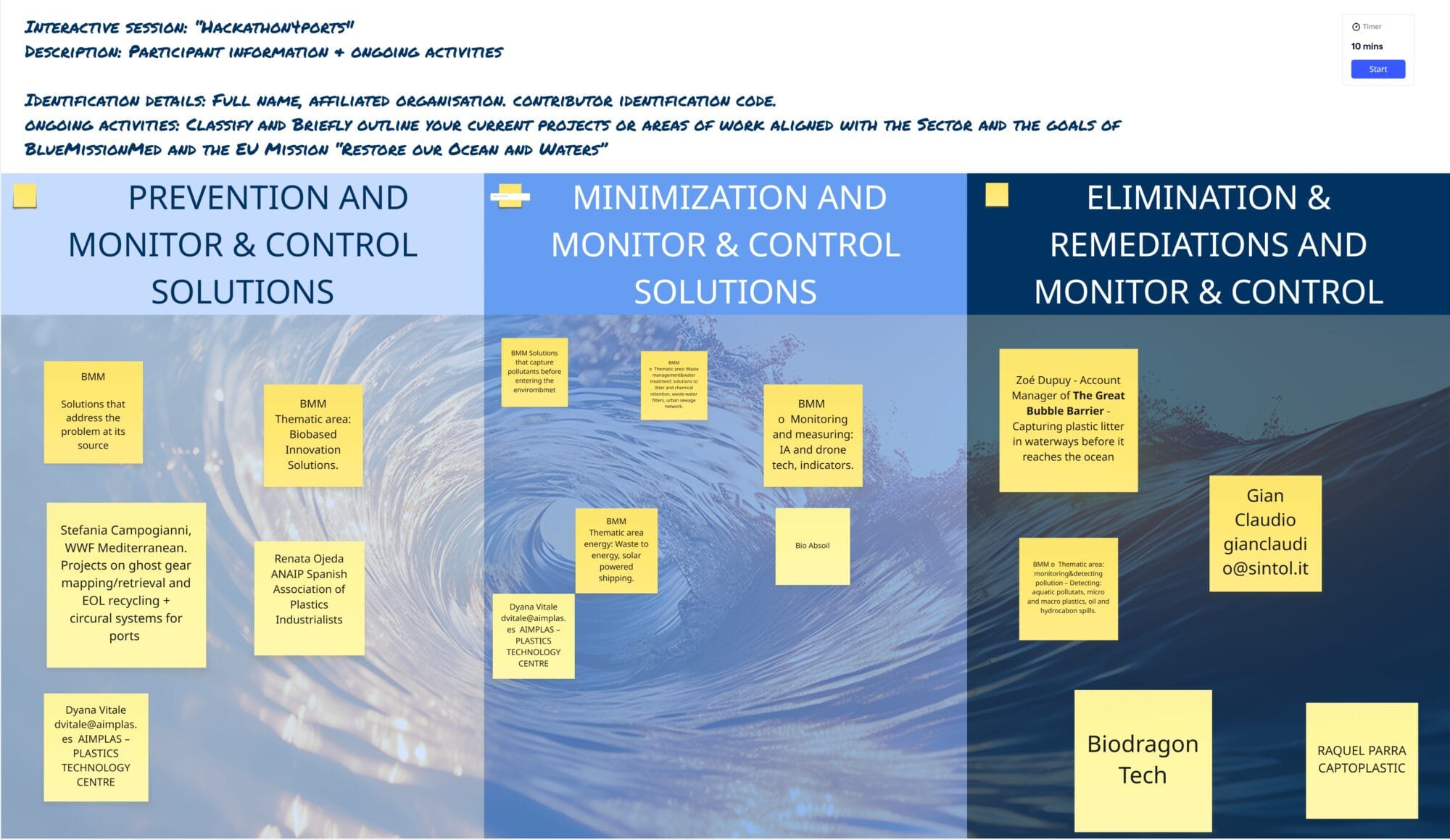Valuable contributions and networking opportunities at Hackathon4Ports!
On 17 September, Hackathon4Ports took place, an inspiring and participatory session aimed at the transport, ports and tourism – cruise ship sector.
A total of 42 attendees participated in the event, representing a wide range of key sectors from across the Mediterranean. The largest sectors were technology, experts and researchers (23.8%) and ports and transport (21.4%). Participation from other sectors included public institutions and institutions (16.7%), governance&policy (11.9%), tourism (4.8%) and finally other sectors, including associations (4.8%), marine activities and diving (4.8%), and representatives from the blue economy finance sector (2.4%).
During the session, opportunities for connection and collaboration between the solutions presented were identified, and stakeholders and the target audience indicated where solutions could be implemented and/or scaled up, as well as the needs for continuing to advance and expand innovative, transformative solutions. The session saw valuable participation from attendees, who even presented new emerging solutions aligned with the objectives of the EU Mission”Restore our ocean & water”.
The session was organised into three parts:
- The first part presented all the BlueMissionMed tools available to stakeholders to advance the Mission’s objectives. Highlights include the Operational Implementation Roadmap, Innovative Transformative Solutions, and available resources on citizen science and awareness, among others.
- In the second part, the solution developers themselves presented innovative and transformative solutions for the sector, providing an opportunity to ask questions and establish potential connections, as well as to find out what stage they are at and what they need.
- Finally, the participatory session via MIRO enabled new needs and connections between parties to be identified. Participants were able to indicate which areas of minimisation, prevention, elimination, remediation, monitoring and control they had been focusing on. In addition, representatives from different sectors and authorities, as well as solution seekers, were able to indicate new needs or those still to be met. Secondly, all participants were able to indicate whether they were looking for partners or strategic connections, or whether they had ideas or projects to develop or scale up.
The session has generated great results to continue advancing towards achieving the objectives of the EU Mission ‘Restore our Ocean & Waters’.
![]() Materials
Materials
- Video Recording
- PowerPoint Presentation (PDF)
- MIRO board used during the interactive sessions


